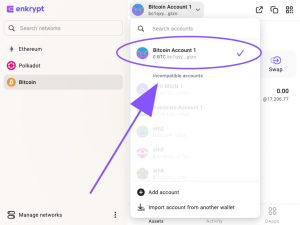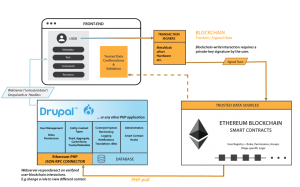3 Year Business Plan Template Free A Guide
Launching a business requires meticulous planning, and a well-structured business plan is paramount. While professional consultants offer valuable expertise, many entrepreneurs initially seek cost-effective solutions. This guide explores the utilization of free 3-year business plan templates, examining their advantages, limitations, and ethical considerations to help you navigate this crucial initial phase of business development.
Understanding the nuances of using free templates is key to avoiding potential pitfalls. This involves not only identifying the essential components of a comprehensive plan but also recognizing the legal and ethical implications of relying on readily available resources. We will delve into the critical aspects of financial projections, action planning, and the integration of both into a cohesive strategy that sets the stage for your business's success.
Understanding the Demand for Free 3-Year Business Plan Templates
The widespread availability of free 3-year business plan templates reflects a significant demand from individuals and businesses seeking tools to structure their strategic thinking and secure funding. This demand stems from a combination of factors, including cost considerations, the perceived ease of use of templates, and the general need for a structured approach to business planning.The typical user of a free 3-year business plan template encompasses a broad spectrum.
This includes aspiring entrepreneurs launching startups, small business owners looking to expand or refine their operations, and even established businesses undertaking strategic planning exercises. While the specific needs and sophistication of the plan may vary across these groups, the common thread is the desire for a readily accessible and cost-effective planning tool.
Motivations for Seeking Free Templates
The primary motivation behind searching for free templates is, unsurprisingly, cost. Many individuals and small businesses operate on tight budgets and cannot afford to invest in expensive business planning software or consultant services. A free template offers a viable alternative, enabling them to create a basic business plan without incurring upfront costs. Beyond cost, convenience and accessibility are also significant drivers.
Free templates are readily available online, requiring minimal effort to locate and download. This ease of access is particularly appealing to those who lack prior experience in business planning or who are short on time. Finally, many users see free templates as a starting point, a foundation upon which they can build a more comprehensive plan, potentially seeking professional guidance as their needs evolve.
Startups versus Established Businesses: Differing Needs
Startups and established businesses utilize free templates differently, reflecting their distinct needs and priorities. Startups often leverage free templates to develop their initial business plans, focusing on securing seed funding, defining their value proposition, and outlining their go-to-market strategy. The template serves as a skeletal framework, providing structure and guidance during this crucial early phase. In contrast, established businesses might use free templates for internal strategic planning exercises, such as market analysis, expansion strategies, or operational improvements.
While the basic structure remains helpful, established businesses often possess more detailed financial data and market insights, allowing them to populate the template with more granular information. A startup might primarily focus on projecting revenue and expenses over three years, while an established business might incorporate detailed financial statements, market share data, and competitor analysis.
Limitations of Free Templates
While free templates offer a valuable resource, they also possess inherent limitations. The most significant limitation is often a lack of customization and flexibility. Free templates typically offer a generic framework, which may not fully align with the unique needs and complexities of a specific business. Furthermore, free templates may lack the sophisticated features found in premium software, such as financial modeling tools, scenario planning capabilities, and automated reporting functions.
This can restrict the depth and complexity of the analysis. Finally, the quality and accuracy of the information provided within a free template can vary significantly. Users should carefully review the template's content and ensure it aligns with industry best practices and relevant regulations. Relying solely on a free template without seeking additional guidance or expertise could lead to an incomplete or inaccurate business plan, potentially hindering the business's success.
Features of a Comprehensive 3-Year Business Plan Template
A robust 3-year business plan template provides a structured framework for outlining your business goals, strategies, and financial projections. A well-designed template simplifies the planning process, ensuring all crucial aspects are considered and presented coherently to investors or lenders. This section details the essential components of such a template.
Essential Sections of a 3-Year Business Plan Template
A comprehensive 3-year business plan template should include several key sections to provide a holistic view of your business. These sections work together to paint a complete picture of your current situation, your future goals, and how you plan to achieve them. Omitting any of these key sections could weaken your plan's persuasiveness and effectiveness.
- Executive Summary
- Company Description
- Market Analysis
- Organization and Management
- Service or Product Line
- Marketing and Sales Strategy
- Funding Request (if applicable)
- Financial Projections
- Appendix (Supporting Documents)
Content of Each Section in a 3-Year Business Plan Template
The following table details the typical content for each section of a comprehensive 3-year business plan template, along with examples and explanations of their importance.
| Section Name | Content Description | Example Data | Importance |
|---|---|---|---|
| Executive Summary | A concise overview of the entire business plan, highlighting key aspects. | Briefly describe your business, target market, financial goals, and key strategies. | Provides a quick snapshot for readers to assess the plan's viability. |
| Company Description | Details about your business, its mission, and legal structure. | Company name, address, legal structure (e.g., LLC, sole proprietorship), mission statement. | Establishes the foundation of your business and its identity. |
| Market Analysis | Research on your target market, competition, and industry trends. | Market size, target customer demographics, competitive landscape analysis, industry growth projections. | Demonstrates understanding of your market and competitive advantage. |
| Organization and Management | Information about your management team and organizational structure. | Team members' experience, roles, and responsibilities; organizational chart. | Showcases the expertise and capabilities of your team. |
| Service or Product Line | Description of your offerings, their features, and benefits. | Detailed descriptions of products/services, pricing strategies, and unique selling propositions. | Clearly defines what you offer and its value proposition. |
| Marketing and Sales Strategy | Your plan for reaching your target market and generating sales. | Marketing channels (e.g., online advertising, social media), sales tactics, customer acquisition cost projections. | Artikels how you will reach your customers and achieve sales goals. |
| Funding Request (if applicable) | Details about the funding you need and how it will be used. | Amount of funding requested, intended use of funds, repayment plan (if applicable). | Crucial for securing investment or loans. |
| Financial Projections | Projected income statements, balance sheets, and cash flow statements for the next three years. | Projected revenue, expenses, profits, assets, liabilities, and cash flow for each year. | Demonstrates the financial viability and sustainability of your business. |
| Appendix | Supporting documents such as market research data, resumes of key personnel, and permits. | Relevant documents to support claims and provide additional information. | Provides evidence to back up your claims and strengthens your plan's credibility. |
Importance of Financial Projections in a 3-Year Business Plan Template
Financial projections are critical for demonstrating the financial viability and sustainability of your business. They provide a roadmap for your financial performance over the next three years, allowing you to anticipate potential challenges and opportunities. Investors and lenders rely heavily on these projections to assess the risk and potential return of your business. Accurate and realistic projections significantly increase the likelihood of securing funding.
For example, a projected annual revenue growth of 20% should be supported by market research and realistic sales strategies. Similarly, a projection of consistent profitability requires a detailed analysis of costs and pricing strategies. Without robust financial projections, a business plan lacks credibility and significantly diminishes its chances of success.
Examples of Visual Aids for Presenting Financial Data
Effective visual aids significantly improve the readability and understanding of financial projections. A well-chosen visual can quickly convey complex information, making it easier for readers to grasp key trends and patterns.* Line graph showing projected revenue growth over three years: This visual clearly illustrates the anticipated increase in revenue over time, highlighting periods of growth or potential slowdowns. For instance, a steeper upward slope in year two compared to year one would indicate accelerated growth.* Bar chart comparing projected costs across different categories: This visual allows for easy comparison of various expense categories (e.g., marketing, salaries, rent) across the three years, revealing potential areas for cost optimization.
A longer bar for marketing in year one versus subsequent years could indicate a higher initial investment in brand awareness.* Pie chart showing the allocation of funding: If seeking funding, a pie chart visually represents how the requested funds will be allocated across different aspects of the business (e.g., equipment, marketing, personnel). A larger slice allocated to equipment might indicate a capital-intensive business.* Cash flow statement illustrated as a waterfall chart: This visually represents the movement of cash into and out of the business over time, clearly demonstrating the impact of various inflows and outflows on the overall cash position.
A waterfall chart clearly displays the net effect of each cash transaction, allowing for quick identification of potential cash flow issues.
The Role of a Business Action Plan within the 3-Year Plan
A comprehensive 3-year business plan provides a high-level roadmap for your company's growth, outlining long-term goals and strategies. However, a 3-year plan alone lacks the granular detail needed for daily operations and effective execution. This is where the business action plan steps in, acting as the detailed playbook that translates the 3-year plan's vision into tangible, achievable steps. It bridges the gap between strategic planning and operational reality.A business action plan complements a 3-year business plan by providing a focused, shorter-term roadmap for achieving specific objectives within the larger context of the long-term strategy.
It breaks down the 3-year plan's ambitious goals into smaller, manageable tasks with assigned responsibilities and deadlines. This allows for consistent progress monitoring and course correction as needed, ensuring the business stays on track towards its overall vision.
Action Items for Different Business Stages
The specific action items within a business action plan will vary significantly depending on the stage of the business lifecycle. A startup will focus on different tasks than an established, mature company.
- Startup Phase:
- Secure seed funding or initial investment.
- Develop a minimum viable product (MVP).
- Establish key partnerships and collaborations.
- Build a strong brand identity and online presence.
- Recruit and onboard initial team members.
- Growth Phase:
- Expand into new markets or product lines.
- Improve operational efficiency and streamline processes.
- Invest in marketing and sales to increase customer acquisition.
- Develop and implement new revenue streams.
- Build a strong company culture to attract and retain top talent.
- Maturity Phase:
- Maintain market leadership and brand loyalty.
- Explore strategic acquisitions or mergers.
- Focus on innovation and product development to stay ahead of competitors.
- Implement robust risk management strategies.
- Plan for succession and long-term sustainability.
Timeframes and Focus: Business Action Plan vs. 3-Year Business Plan
The key difference lies in their time horizons and level of detail. A 3-year business plan is a long-term strategic document, typically covering three years, focusing on broad objectives, market analysis, and financial projections. In contrast, a business action plan is shorter-term, often covering a quarter or a year, detailing specific actions, responsibilities, and deadlines for achieving milestones aligned with the 3-year plan.
The 3-year plan sets the destination; the action plan charts the course to get there.
Integrating Action Items into the 3-Year Plan Timeline
Integrating action items from the business action plan into the 3-year plan's timeline is crucial for effective execution. This can be achieved through a Gantt chart or a similar project management tool. For example, if the 3-year plan includes a goal to "increase market share by 20%," the action plan might break this down into quarterly goals, such as launching a new marketing campaign in Q1, expanding into a new geographic region in Q2, and improving customer service in Q3 and Q4.
Each of these quarterly goals would be represented as tasks on the Gantt chart, with assigned responsibilities and deadlines, ensuring alignment with the overarching 3-year goal. This integrated approach provides a clear, visual representation of how short-term actions contribute to long-term success.
Legal and Ethical Considerations for Using Free Templates
Using free business plan templates can offer significant cost savings, but it's crucial to understand the potential legal and ethical implications before relying on them. Ignoring these aspects can lead to serious consequences for your business. This section Artikels key considerations to ensure you use free templates responsibly and legally.
Potential Legal Pitfalls of Using Free Templates
Free templates, while readily available, may contain clauses or lack necessary provisions that could expose your business to legal risks. Copyright infringement is a major concern. Many templates are copyrighted, and using them without proper attribution or license could lead to lawsuits and financial penalties. Furthermore, some templates may include outdated or inaccurate legal information, leading to non-compliance with relevant regulations.
This could result in fines or other legal repercussions. For instance, a template might contain outdated information regarding data privacy regulations, putting your business at risk of violating laws like GDPR or CCPA.
Ethical Implications of Sole Reliance on Free Templates
While cost-effectiveness is a valid consideration, relying solely on a free template for a critical business document like a 3-year plan raises ethical questions. A business plan is a roadmap for your company's future, and using a generic template without significant adaptation could lead to a lack of originality and strategic depth. This could be perceived as a lack of commitment or insufficient preparation, potentially impacting investor confidence or lender approval.
Moreover, using a template that doesn't accurately reflect your business's unique needs and goals could be seen as ethically questionable, as it might mislead stakeholders about the viability and potential of your venture.
Best Practices for Adapting Free Templates
Adapting a free template to fit your specific business needs is crucial to avoid legal issues and create a credible plan. Begin by thoroughly reviewing the template's terms of use to understand copyright restrictions and any limitations on its use. Then, substantially modify the content to reflect your company's unique circumstances, market analysis, financial projections, and strategic goals.
Avoid simply replacing placeholder text; instead, conduct your own market research and develop original financial projections based on your business model. Consider consulting with a legal professional to ensure your adapted plan complies with all relevant regulations. Remember, the goal is not to simply use the template, but to use it as a starting point for creating a document that is both legally sound and accurately represents your business.
Steps to Ensure Legal Compliance When Using a Free Template
Careful planning is essential to avoid legal issues when using free templates. Here are steps to follow:
- Review the Template's Terms of Use: Carefully examine the license agreement to understand permitted uses, attribution requirements, and any limitations.
- Conduct Thorough Due Diligence: Ensure the template's content is accurate and up-to-date with relevant laws and regulations.
- Substantially Modify the Template: Go beyond simply replacing placeholder text; develop original content based on your specific business context.
- Seek Legal Counsel: Consult with a lawyer specializing in business law to review your adapted plan and ensure compliance.
- Properly Attribute the Template (if required): If the license requires attribution, clearly acknowledge the source of the template.
Resources and Tools for Building a 3-Year Business Plan
Creating a robust 3-year business plan requires more than just a template; it necessitates leveraging various resources and tools to effectively gather information, analyze data, and present your strategy clearly. This section will explore several options to help you build a comprehensive and effective plan.
Free Online Resources for Business Plan Development
Numerous free online resources can significantly aid in the business plan creation process, offering valuable information and guidance. These resources often provide insights into market research, financial projections, and industry best practices. Accessing these resources can save time and effort while enhancing the quality of your plan.
- The Small Business Administration (SBA): The SBA website offers a wealth of resources, including guides, templates, and mentorship opportunities for entrepreneurs. Their materials cover various aspects of business planning, from market analysis to financial forecasting.
- SCORE: SCORE provides free mentoring and workshops to small business owners. Their experienced mentors can offer valuable feedback and guidance on your business plan.
- Industry-Specific Associations: Many industries have dedicated associations that offer resources and insights relevant to their specific sectors. These resources can provide crucial market data and competitive analysis.
- Government Data Portals: Government websites often contain valuable data on demographics, economic trends, and industry statistics. This data is crucial for conducting thorough market research.
- University Libraries and Research Databases: Many university libraries offer free access to business databases and research papers, providing valuable insights and data for your business plan.
Software Tools for Business Plan Creation and Management
Several software tools can facilitate the creation and management of a 3-year business plan. These tools range from simple spreadsheet programs to dedicated business planning software, each offering different functionalities and levels of complexity. Choosing the right tool depends on your specific needs and technical skills.
Spreadsheet Software vs. Dedicated Business Planning Software
Spreadsheet software, like Microsoft Excel or Google Sheets, offers a flexible and readily available option for creating a business plan. They allow for easy data entry, calculations, and charting. However, they lack the built-in features and templates specifically designed for business planning that dedicated software provides.Dedicated business planning software, on the other hand, offers pre-built templates, financial modeling tools, and collaboration features.
These tools often streamline the planning process and provide more sophisticated analytical capabilities. However, they may have a steeper learning curve and potentially higher costs (though some offer free versions or trials).
Adapting and Customizing a Free Template
Once you've chosen a free template and a software tool (spreadsheet or dedicated software), the process of adaptation and customization involves several steps. First, thoroughly review the template, understanding each section and its purpose. Then, replace the placeholder text and data with your own information. This includes conducting thorough market research to populate the market analysis section and using realistic financial projections based on your business model.
You'll need to use the chosen software's features (formulas, charts, etc.) to perform calculations, create graphs, and present your data effectively. Finally, review and revise your plan to ensure accuracy, clarity, and consistency throughout. Consider seeking feedback from mentors or advisors to refine your plan further.
Closure
Successfully leveraging a free 3-year business plan template requires careful consideration and adaptation. While these templates provide a valuable foundation, remember that a successful business plan is more than just a document; it's a dynamic roadmap that requires continuous refinement and adjustment. By understanding the limitations, adhering to ethical guidelines, and utilizing supplementary resources, you can transform a free template into a powerful tool for achieving your entrepreneurial goals.
Remember to tailor the plan to your specific business needs and regularly review and update it to reflect changing circumstances.
FAQ Summary
Can I use a free template for a loan application?
While a free template can be a starting point, lenders often require specific information and formats. Consult with a lender directly to ensure your plan meets their requirements.
What if the free template doesn't have a section I need?
Add the necessary sections yourself. Customizing the template to your specific business needs is crucial.
Are there any copyright issues with free templates?
Review the template's licensing agreement carefully. Some templates may restrict commercial use or require attribution.
How often should I review and update my 3-year plan?
Regularly review and update your plan, ideally at least annually, or more frequently if significant changes occur in your business or market conditions.



